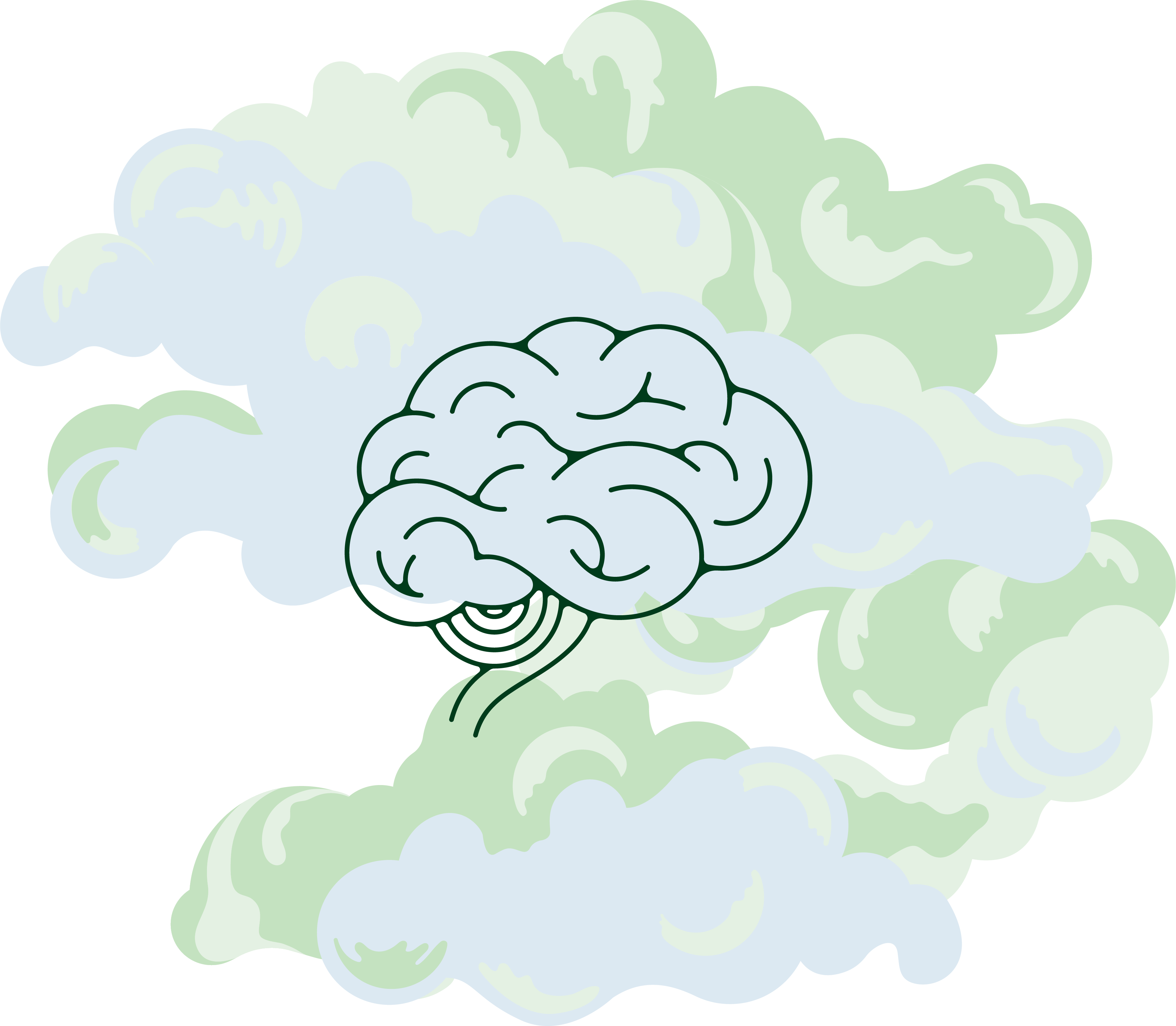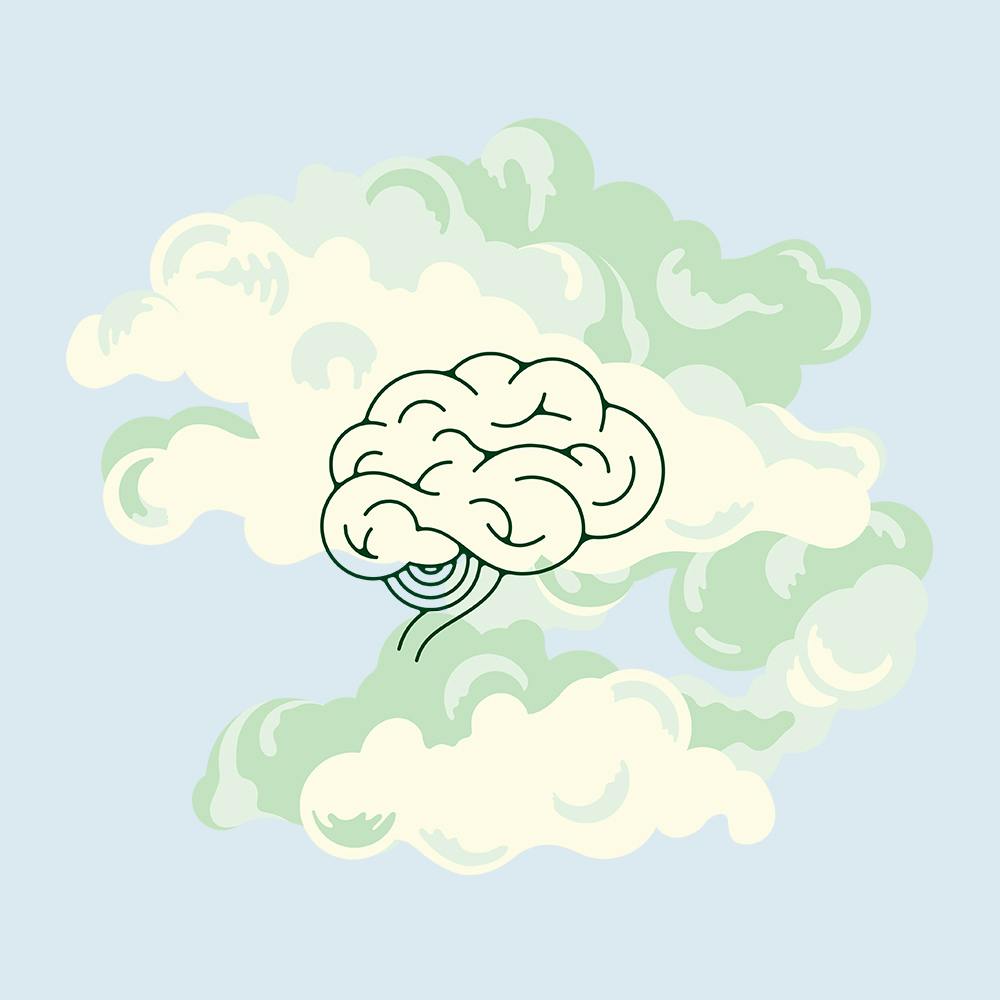Illustrated by Erin Rommel
When we think of periods, a few common side effects spring to mind. Whether that’s cramps, mood swings, poor sleep, bloating or PMS, it’s certainly an experience defined by strong sensations — be they physical or emotional.
But one symptom that rarely features in conversations around periods is migraines, which women are more likely to suffer from than men. And as it turns out, menstrual migraines are much, much more common than you might think.
It wasn’t something I was aware of until about a year ago, when I first started experiencing them. I’d heard of migraines related to hormones, as I’d had a friend that had struggled with them during pregnancy, but never before had I made the link between them and my menstrual cycle.
It wasn’t until I started making a note of them in my period tracking app that a monthly pattern started to become clear. In my case, they were migraines with aura (affecting my vision), and happened one to two days after the end of my period as my hormones resettled.

The first time it happened I was in a cafe trying to work when all of a sudden, I could no longer focus on the screen. I became acutely aware of all the lights in the room, which looked like they were glowing, and obscured my view from the screen in front of me.
I panicked, as the closest reference point for the sensations I was experiencing was an anxiety attack, but it had come on completely unprompted. I couldn’t focus, and had to leave immediately.
By the time I had made it onto a bus home, I was exhausted and had a throbbing headache. I went straight to bed when I got home, and didn’t feel better until the next morning.
A quick Google search revealed menstrual migraines to be a fairly common occurrence, so I decided to find out more. According to Dr. Ross Perry, who is a GP and the Medical Director of CosmedicsUK, “they affect 60% of women,” and can be regular or infrequent.
“For some it can be monthly, and for others, it may be less frequent,” he tells me. He adds that they can begin at any stage in a woman’s life. “Migraines may begin when young girls get their first period,” he continues, “and they can continue throughout the reproductive years and into menopause.”
For Anastasia Campion, 33, they came on relatively suddenly. “It started with blurry vision,” she tells me, “I’d had migraines as a child, but never anything like this.” Soon, her symptoms became more pronounced.
“I thought I was losing my sight—I got really worried so I spoke to a doctor.” Unfortunately, her experience wasn’t positive, so she took matters into her own hands by searching on the internet.
“I just wish they taught us more about how our hormones can affect us,” she says, “instead, we’re made to feel crazy for going through symptoms that are relatively common. Why didn’t I know about this before? It would have saved me a lot of anxiety.”
The same is true of Georgina Irving, 32, who experienced severe migraines when her periods returned after childbirth. “When they hit there’s just nothing for it really, I have to go into a dark room, take some tablets and hope for the best — which is obviously quite difficult when you have small children.”
Georgina’s migraines also have a heavy visual component, and are followed by intense headaches that can last for hours or days. “I just wish we were given more information about the possible side effects we fact as women throughout our lives when our hormones shift through different cycles. Knowing more about it would certainly help,” she tells me.
“
I just wish they taught us more about how our hormones can affect us
So what causes them? “Menstrual migraines tend to develop either two days before your period starts or the first three days,” explains Dr. Perry. “They tend to be caused by the natural drop in oestrogen levels around this time and usually involve a one sided, throbbing headache, nausea, vomiting and sensitivity to bright lights and sounds.” He adds that “you don’t need to have all the above symptoms and may just display one of two of the above.”
In my case they come on suddenly and often can only be resolved by sleep. I asked Dr. Perry if there was anything to be done to limit your risk of developing them. “Unfortunately, it’s mainly down to genetics,” he says. This is because patients with chronic migraines often present with other underlying health conditions, such as mood disorders or pain syndromes like fibromyalgia.
“However there are certain things which can help the onset and severity such as making sure you’re hydrated and exercising regularly,” Dr. Perry continues. He also recommends trying to keep stress levels down, although adds that this is “easier said than done.”
Otherwise, he recommends “taking time to relax and limiting time spent on a PC or phone,” as well as “trying to eat a balanced diet, getting lots of sleep and limiting alcohol consumption,” which are proven ways to keep your hormone levels “normal” throughout the month.
It’s clear that as with any other issue that falls under women’s health, this is chronically under-researched. “In my experience, doctors have been quite dismissive of it really,” says Anastasia, “they just sort of say, oh well that’s a migraine, without giving me much more information. In the end, it was Google that proved to be the most effective resource.”
In my case, it took a long time to realise that the issues of blurry visions weren’t related to anxiety (an underlying health issue for me), and were actually a physical symptom that had an easily identifiable cause. There was something comforting in that knowledge, and had I been equipped with all the information during my education, it would have given me cause to doubt myself less — and circumvented a great deal of unnecessary panic.
For an issue that Dr. Perry states affects 60% of cis women (who make up just under 50% of the global population according to statistics from the World Bank), the lack of research into this health issue is really concerning.
For anyone that has experienced sudden onset migraines, it can be incredibly scary, and surely we owe it to them to ensure that there are plenty of resources and greater awareness of this issue.






